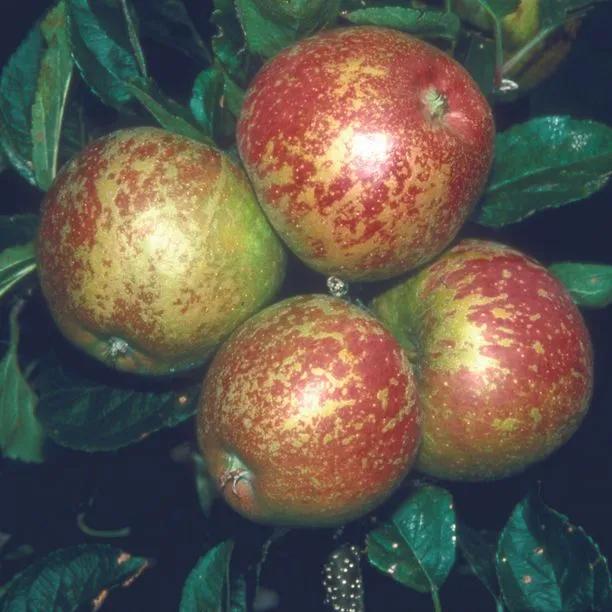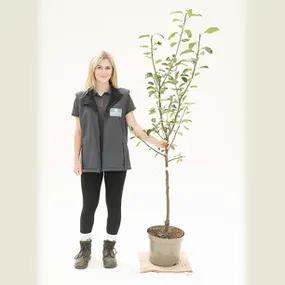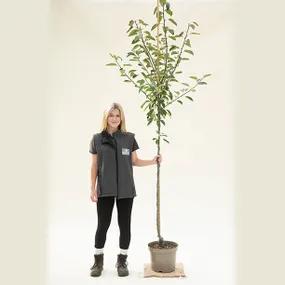Kidds Orange Red Apple Trees
Honest Delivery Prices- Eating apple and juicer. Sweet-sharp flavour
- Spur bearer
- Not self fertile.
- Pollinator
- Pollination Group D.
- Harvesting: Mid October.
- Stores until new year.
- RHS Plants for Pollinators
- RHS Award of Garden Merit
Recommended extras
Description
Kidd's Orange Red - Eating Apples
Kidds Orange Red has all the traits of a classic English apple, with a deliciously aromatic, sweet flavour. The yellow skin becomes mostly covered with a red blush as it ripens and there is a little russeting: a very handsome fruit, and the tree in flower is a beautiful sight.
The flesh is firm and chewy, holding its juiciness to the last chomp.
The trees are much less temperamental than their Cox parent and the fruit are superb for juicing. ~
Pick in mid-October and your fruit will store till the new year.
Browse our range of apple trees or the full variety of fruit trees.
Features:
- Eating apple and juicer. Sweet-sharp flavour
- Spur bearer
- Not self fertile.
- Pollinator
- Pollination Group D.
- Harvesting: Mid October.
- Stores until new year.
- RHS Plants for Pollinators
- RHS Award of Garden Merit
Pollination Guide for Kidd's Orange Red
In flower in the mid-late season, Kidd's Orange Red is in pollination group D and being self-sterile needs a partner in groups D, D or E for cross-pollination. If in doubt, we always recommend using a crab apple tree, as they are very ornamental, bear great fruit for cooking with and are the best pollinators.
Rootstocks and Cultivation Notes
All of these trees are on MM106 rootstocks, the best all-round rootstock; these are suitable for wire-trained forms and larger orchard trees, up to 4 metres high. Much more disease resistant that a Cox, Kidd's Orange Red is still susceptible to canker, which tends to be more of a problem in the damper areas in the West of the country, and therefore we don't recommend them for organic growing.
They are hardy trees and will do very well in Scotland and the North.
They are not the most vigorous, but the crops are reliable and the tree does not have a pronounced biennial tendency. Because of their relative lack of vigour, mature trees need little pruning and you don't need to thin the fruit too much - just pick off any small, malformed and diseased fruitlets after the June drop.
Planting Instructions
Did You Know?
Mr James Hutton Kidd (1877-1945) in New Zealand, creator of the world-famous Gala, bred this variety in the 1920's from Cox's Orange Pippin and Red Delicious, which adds the sweetness that distinguishes this variety so well from its Cox parent.
It was introduced to the UK in 1932.




